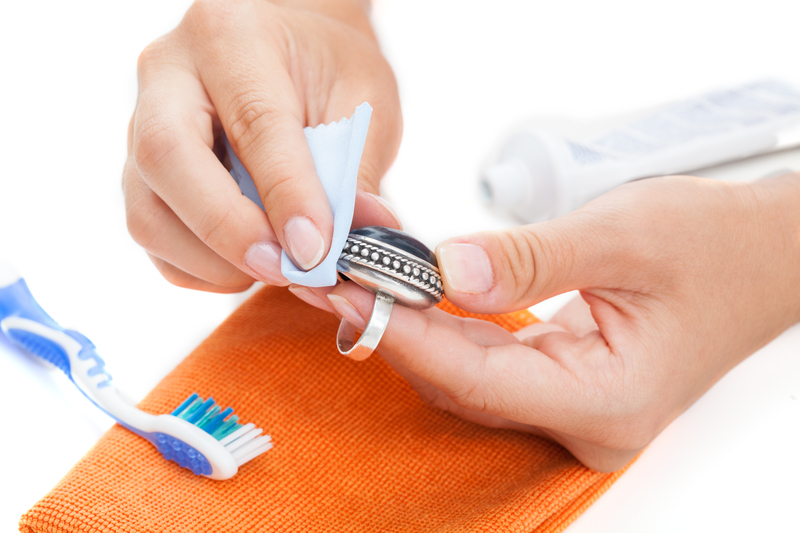Wood Furniture Care Tips
Posted on 19/02/2025
Wood furniture is a timeless addition to any home, providing a classic, elegant look that never goes out of style. However, to maintain its beauty and longevity, proper care is essential. In this article, we will explore a comprehensive guide to wood furniture care, covering everything from routine cleaning to protection against environmental factors, and repair techniques. Follow our tips to ensure your wood furniture remains in pristine condition for years to come.
Regular Cleaning
Regular cleaning is the cornerstone of maintaining wood furniture's natural beauty. Dust and dirt can cause scratches and dull the finish over time. Here are some tips for routine cleaning:
- Dusting: Use a soft, lint-free cloth, such as microfiber, to dust your furniture regularly. Dust in the direction of the wood grain to avoid scratches.
- Avoid Over-Wetting: When cleaning, be cautious not to over-wet the cloth, as excessive moisture can damage the wood. Instead, use a barely damp cloth to wipe the surface.
- Mild Cleaners: For deeper cleaning, use a mixture of mild soap and water. Dip the cloth in the solution, wring it out thoroughly, and wipe the furniture. Follow up with a dry cloth to remove any remaining moisture.
- Avoid Harsh Chemicals: Avoid using harsh chemicals, such as ammonia-based cleaners, which can strip the finish and damage the wood.

Polishing and Waxing
Polishing and waxing your wood furniture can enhance its shine and provide a protective layer against moisture and dirt. Here's how to do it right:
- Choose the Right Product: Select a polish or wax specifically designed for wood furniture. Avoid products with silicone, as they can create a sticky residue.
- Test in an Inconspicuous Area: Before applying the polish or wax, test it in a hidden area to ensure it doesn't discolor the wood.
- Application: Apply the polish or wax using a soft cloth, following the direction of the grain. Use a circular motion for even coverage. Allow it to sit for a few minutes before buffing with a clean cloth to achieve a smooth, shiny finish.
- Frequency: Depending on the type of wood and finish, polish or wax your furniture every six months to a year. Over-polishing can lead to a buildup that attracts dust.
Protecting Against Environmental Factors
Exposure to various environmental factors can take a toll on your wood furniture. Here are some tips to safeguard your pieces:
- UV Protection: Direct sunlight can cause wood to fade and crack. Position furniture away from windows or use curtains and blinds to limit exposure to UV rays.
- Humidity Control: Wood is sensitive to changes in humidity, which can cause it to warp or crack. Use a humidifier in dry conditions and a dehumidifier in high-humidity areas to maintain stable levels. An ideal indoor humidity level is between 40-45%.
- Temperature Regulation: Avoid placing wood furniture near heat sources like radiators or fireplaces, as extreme temperatures can cause the wood to dry out and crack.
- Surface Protection: Use coasters, placemats, and tablecloths to protect surfaces from spills, heat, and scratches. Felt pads under decorative items and accessories can help prevent damage.
Handling Spills and Stains
Accidents happen, and when they do, quick and proper action can prevent lasting damage to your wood furniture. Here's how to handle common spills and stains:
- Water Rings: Water rings are a common issue. To remove them, first try wiping with a damp cloth followed by a dry one. If that doesn't work, mix equal parts baking soda and toothpaste to create a paste, apply it to the ring with a soft cloth, and rub gently in a circular motion.
- Ink Stains: Dab the stain gently with a cloth soaked in rubbing alcohol or non-gel toothpaste. Avoid scrubbing, as this can damage the finish. Follow up with a clean, damp cloth to remove any residue.
- Grease Stains: Sprinkle cornstarch or baking soda over the grease stain and let it sit for 15 minutes. Wipe away with a soft cloth, then clean with a mild soap and water solution.
- Wine or Food Spills: Blot the spill immediately with a clean cloth. Avoid rubbing, which can spread the stain. Clean the area with a mixture of mild soap and water, then dry thoroughly.
Repairing Minor Damage
Over time, wood furniture can develop minor scratches, dings, and other imperfections. Here are some techniques to repair and restore your furniture:
- Scratch Repair: For superficial scratches, use a wax crayon or wood marker in a matching color to fill in the scratch. Rub it in with a soft cloth, then buff to blend. Deeper scratches may require wood filler or touch-up kits.
- Removing Dents: Place a damp cloth over the dent and apply a hot iron for a few seconds. The steam will help raise the wood fibers, reducing the appearance of the dent. Repeat as necessary, but avoid overheating the wood.
- Fixing Loose Joints: For loose joints, apply wood glue to the affected area and clamp it until the glue dries. Ensure the alignment is correct before clamping.
- Refinishing: If the finish is severely damaged, refinishing may be necessary. Sand the surface carefully to remove old finish and apply new stain or varnish. Follow manufacturer instructions for best results.
Seasonal Care
Caring for wood furniture can vary with the changing seasons. Here's a breakdown of seasonal care tips:
- Winter: Cold, dry air can cause wood to shrink and crack. Use a humidifier to maintain consistent humidity levels and avoid placing furniture near heat sources.
- Spring Cleaning: Use spring as an opportunity for deep cleaning and polishing. Check for any damage that might have occurred during the winter and address it promptly.
- Summer: High humidity can cause wood to swell. Use dehumidifiers and ensure proper ventilation to maintain stable conditions. Protect furniture from direct sunlight.
- Autumn Maintenance: As you prepare your home for winter, inspect and repair any potential issues, ensuring your furniture is in good shape to endure the colder months.
Proper Furniture Placement
Where and how you place your wood furniture can have a significant impact on its longevity. Consider the following tips for optimal placement:
- Flat, Stable Surfaces: Ensure your furniture sits on flat, stable surfaces to avoid undue stress on joints and legs.
- Avoid Heavy Traffic: Place delicate or antique pieces away from high-traffic areas to minimize the risk of bumps and scratches.
- Adequate Spacing: Provide adequate spacing between pieces to allow for air circulation and prevent contact damage.
- Balanced Weight: Distribute weight evenly across shelves and tabletops to avoid warping and bowing.

Professional Maintenance
While many maintenance tasks can be performed at home, some situations may require professional intervention:
- Severe Damage: For significant damage, such as deep gouges, broken elements, or extensive finish wear, seek professional repair services.
- Antique Restoration: Antique furniture can be delicate and require specialized care. Professional restorers can ensure that any work maintains the integrity and value of the piece.
- Periodic Check-ups: Consider periodic professional check-ups to address potential issues before they become major problems, ensuring your furniture's longevity.
Conclusion
Wood furniture can be a lasting and beautiful part of your home if properly cared for. Regular cleaning, polishing, and protection against environmental factors can keep your furniture looking its best. Additionally, knowing how to handle spills, stains, and minor repairs can prevent long-term damage. Follow these comprehensive wood furniture care tips to enjoy your cherished pieces for years to come.




